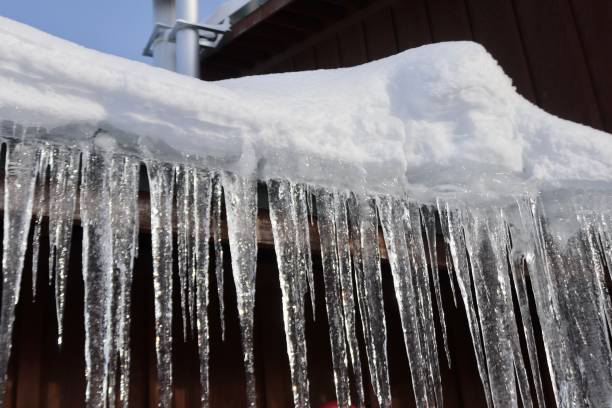Tips to Prevent Frozen Plumbing in Cold Weather: Pro Advice
Tips to Prevent Frozen Plumbing in Cold Weather: Pro Advice
Blog Article
They are making several great pointers relating to How to prepare your home plumbing for winter weather overall in this article in the next paragraphs.

Winter can ruin your plumbing, especially by freezing pipelines. Below's how to avoid it from occurring and what to do if it does.
Intro
As temperature levels decline, the risk of frozen pipes increases, potentially resulting in expensive repair services and water damages. Comprehending exactly how to stop icy pipelines is vital for home owners in cool environments.
Comprehending Frozen Pipelines
What causes pipelines to ice up?
Pipes freeze when revealed to temperature levels below 32 ° F (0 ° C) for prolonged periods. As water inside the pipelines ices up, it expands, taxing the pipeline walls and possibly creating them to burst.
Dangers and problems
Frozen pipes can bring about water supply disruptions, residential property damages, and expensive repair work. Ruptured pipelines can flooding homes and create extensive structural damage.
Indications of Frozen Water Lines
Identifying icy pipes early can avoid them from bursting.
How to determine frozen pipes
Seek lowered water circulation from faucets, uncommon odors or noises from pipes, and noticeable frost on exposed pipes.
Prevention Tips
Shielding vulnerable pipes
Wrap pipes in insulation sleeves or use heat tape to safeguard them from freezing temperatures. Focus on pipes in unheated or exterior areas of the home.
Home heating strategies
Maintain indoor areas adequately heated up, especially areas with pipes. Open up cupboard doors to allow warm air to flow around pipelines under sinks.
Safeguarding Outdoor Plumbing
Garden hoses and exterior faucets
Disconnect and drain pipes yard hose pipes prior to winter season. Set up frost-proof faucets or cover outside taps with protected caps.
What to Do If Your Pipelines Freeze
Immediate actions to take
If you think icy pipelines, keep faucets open up to relieve pressure as the ice thaws. Use a hairdryer or towels soaked in hot water to thaw pipelines gradually.
Long-Term Solutions
Architectural adjustments
Consider rerouting pipelines far from outside wall surfaces or unheated locations. Include added insulation to attic rooms, cellars, and crawl spaces.
Updating insulation
Buy high-quality insulation for pipes, attic rooms, and wall surfaces. Correct insulation aids keep regular temperature levels and lowers the threat of icy pipes.
Final thought
Stopping frozen pipes calls for positive procedures and quick reactions. By understanding the reasons, indications, and preventive measures, homeowners can shield their plumbing during winter.
5 Ways to Prevent Frozen Pipes
Drain Outdoor Faucets and Disconnect Hoses
First, close the shut-off valve that controls the flow of water in the pipe to your outdoor faucet. Then, head outside to disconnect and drain your hose and open the outdoor faucet to allow the water to completely drain out of the line. Turn off the faucet when done. Finally, head back to the shut-off valve and drain the remaining water inside the pipe into a bucket or container. Additionally, if you have a home irrigation system, you should consider hiring an expert to clear the system of water each year.
Insulate Pipes
One of the best and most cost-effective methods for preventing frozen water pipes is to wrap your pipes with insulation. This is especially important for areas in your home that aren’t exposed to heat, such as an attic. We suggest using foam sleeves, which can typically be found at your local hardware store.
Keep Heat Running at 65
Your pipes are located inside your walls, and the temperature there is much colder than the rest of the house. To prevent your pipes from freezing, The Insurance Information Institute suggests that you keep your home heated to at least 65 degrees, even when traveling. You may want to invest in smart devices that can keep an eye on the temperature in your home while you’re away.
Leave Water Dripping
Moving water — even a small trickle — can prevent ice from forming inside your pipes. When freezing temps are imminent, start a drip of water from all faucets that serve exposed pipes. Leaving a few faucets running will also help relieve pressure inside the pipes and help prevent a rupture if the water inside freezes.
Open Cupboard Doors
Warm your kitchen and bathroom pipes by opening cupboards and vanities. You should also leave your interior doors ajar to help warm air circulate evenly throughout your home.

I hope you enjoyed reading our topic on Prevent Frozen Pipes . Many thanks for spending some time to read our article post. Be sure to set aside a second to promote this blog if you enjoyed it. We cherish reading our article about Winter Plumbing Precautions: Preventing Frozen Pipes.
Click Here Report this page